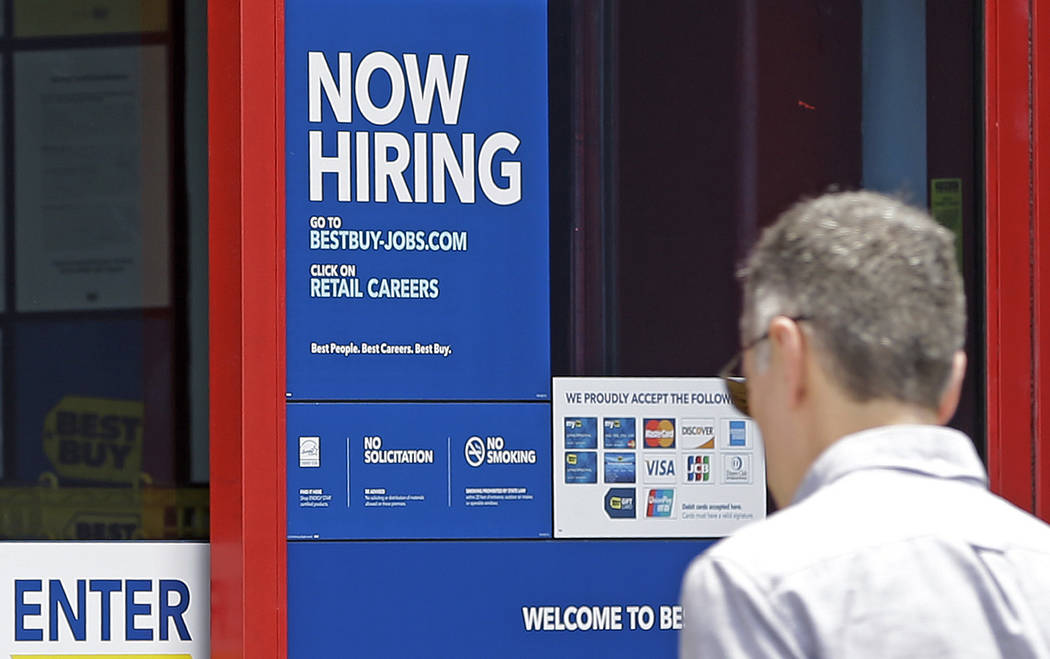COMMENTARY: The coming welfare are: Should recipients be required to work?
The Trump administration may have declared it over, but a new War on Poverty is coming anyways. It will be fought largely over the “work requirement” — should the government require welfare recipients either to get a job or to train for one? It’s a philosophical as much as a practical question.
A work requirement addresses a dilemma of all welfare programs. If you make eligibility and benefits too generous, you destroy the incentive to work. People will just collect their welfare checks. But if the program is too stingy and strict, many genuinely needy people may lack support. A work requirement tries to disarm this dilemma by conditioning welfare benefits on having a job or training for one.
There’s already a work requirement for TANF (Temporary Assistance for Needy Families). That’s traditional welfare; it mainly assists single mothers and their children. Now the Trump administration proposes work requirements for two huge programs: Medicaid and food stamps, known as SNAP (Supplemental Nutrition Assistance Program).
A little background.
First, these programs are huge. According to a new report by President Donald Trump’s Council of Economic Advisers (CEA), Medicaid had 71 million recipients in 2016 and cost $566 billion, counting both federal and state contributions. (The program is jointly funded.) SNAP spending in 2016 totaled $71 billion for 44 million beneficiaries. TANF is the smallest program of the group, with spending of $31 billion for 3.9 million recipients.
Second, the debate over the work requirement excludes older and disabled Americans. The focus would be on able-bodied and non-elderly people between 18 and 64. Disability status would be determined by classification under two major disability programs: Social Security Disability Insurance (SSDI) or the Supplemental Security Income program (SSI).
In 2013, reports a new CEA study, there were about 17.2 million adult Medicaid recipients who were neither disabled nor elderly. The comparable figure for SNAP was 18.6 million beneficiaries. In both cases, about half the recipients didn’t work at all, and nearly another 20 percent worked fewer than 30 hours a week.
This strikes Trump officials as bad and unfair. It’s bad because it isolates low-income workers from the labor market and makes it less likely that they’ll develop the skills that will enable them to improve their living standards. It’s unfair because it violates norms.
“Society generally expects … non-disabled working-age adults” to work, the CEA report says while also noting: “As women’s role in the workforce [has grown], so [have] social expectations of work for single mothers on welfare.”
Although the report doesn’t propose a detailed work requirement, it provides enough information to imagine what one would look like. Suppose, for example, Medicaid and SNAP recipients were required to work at least 30 hours a week. Crude calculations suggest that about 25 million recipients would fall under the work requirement.
Hold it, say critics. In practice, an expanded work requirement would hurt the poor. The complexities of any program would result in people not satisfying the requirement and, as a result, losing benefits.
The CEA report, says LaDonna Pavetti of the Center on Budget and Policy Priorities, a liberal research and advocacy group for the poor, “says nothing about the realities of the low-income labor market. There’s a lot of movement in and out of jobs. Workers don’t get benefits. They can’t control their hours.”
The CEA study “doesn’t acknowledge what it takes to get into the market,” she says. Workers need child care and job training. Both are expensive; neither is broached extensively in the report. Moreover, some critics argue the number of welfare beneficiaries who don’t work is overstated, because the economy has improved.
So let the political wars over welfare begin. The House of Representatives has already passed legislation imposing new work requirements for SNAP; the Senate has not. There’s plenty to argue about. Is this a problem in search of a solution? Or a solution in search of a problem?
Robert Samuelson writes a column for The Washington Post.




























